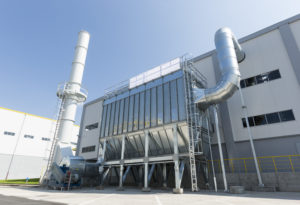
Biogenic CO2 benefits: how 4 industries are seizing opportunities by accurately monitoring emissions
Understanding and, most importantly, accurately measuring your business’s Biogenic CO2 emissions can offer many business opportunities.

In an era of heightened environmental accountability, the waste-to-energy industry is under increasing pressure to reduce its carbon footprint and align with global sustainability goals. One area that often goes overlooked, but plays an increasingly important role in both climate strategy and business operations, is the measurement of biogenic CO2.
Biogenic CO2—carbon dioxide released from the combustion of biological sources like plants, animals, and organic waste—has the potential to unlock significant value for organisations operating in waste incineration and co-incineration. From improved regulatory compliance to enhanced sustainability credentials, accurately assessing biogenic CO2 is no longer just a regulatory necessity—it’s a business opportunity.
So what exactly are the benefits of measuring biogenic CO2, and how can organisations do so effectively? Let’s break it down.
What is biogenic CO2 and why is it important to measure?
As the world transitions away from fossil fuels to renewable energy sources, both the regulatory and market focus have turned to biogenic CO2 and the need for accurate carbon accounting–reflecting a growing recognition that not all emissions are created equal.
With carbon markets under increasing scrutiny, policymakers are strengthening their efforts to ensure transparency, accountability, and effectiveness in emissions reporting–including biogenic CO2–to drive more effective climate strategies on the path to net zero.
One example is the EU’s revised Renewable Energy Directive (RED II) which encourages the use of biogenic waste for energy production, requiring accurate measurement of biogenic versus fossil CO2 to ensure compliance with sustainability targets.
What are the main business benefits of measuring biogenic CO2?
As a carbon-neutral emission, accurate measurement and reporting of biogenic CO2 unlocks several opportunities for waste-to-energy businesses within carbon markets, as well as strengthening sustainability efforts and boosting their ESG profile overall.
With biogenic CO2 measurement, operators can pinpoint exactly how much of their emissions are climate-neutral, meaning they won’t need to buy allowances for that portion under the EU Emissions Trading System or other local systems. By staying under an emissions cap, a business could sell surplus allowances or save them for future use.
Accurate proof that a substantial portion of energy comes from biogenic sources can also enable organisations to access renewable energy credits (RECs)—a powerful tool for enhancing a plant’s sustainability portfolio and diversifying revenue streams. What’s more, in certain regions, waste-to-energy plants that leverage biogenic sources can tap into lucrative opportunities like feed-in tariffs, tax credits, and other government subsidies.
Understanding biogenic CO2 can be good for branding, too. Transparent emissions reporting is seen as increasingly critical to attracting investment and opening doors to environmentally conscious consumers—all the while enhancing a company’s reputation as key players in the transition away from fossil fuels.
Turning biogenic CO2 into business gains
Under the UK’s Renewable Obligation (RO) scheme, waste-to-energy operators must prove at least 50% of their CO2 emissions are biogenic to earn valuable Renewable Obligation Certificates (ROCs) which can be traded when energy prices are high.
A waste-to-energy plant in Plymouth that processes up to 265,000 tonnes of household, commercial, and industrial waste came to Envea for a solution that would enable them to confidently report their biogenic CO2 emissions in order to qualify for ROCs. Their previous manual sampling system––loosely based on the EN 13833 standard––lacked automation, required frequent manual intervention, and produced inconsistent results.
To address these challenges, we introduced the AMESA-B system, providing a fully automated and continuous sampling process that complies with the EN 13833 standard. The system integrates with the plant’s control systems, automatically adjusting to burner activity and storing data for detailed analysis. By offering a more representative sample of the plant’s emissions without operator bias, measurements are now automated and highly precise.
After an 18-month trial, the plant can now reliably report biogenic CO2 fractions above 50%, with only a 5% variation. This enhanced accuracy has not only ensured compliance but also improved the plant’s ability to qualify for ROCs and secure more revenue as a result.
Elevating business operations with accurate insights
With CO2 emissions from the waste-to-energy industry being a significant contributor to global warming, improving emissions data is crucial for environmental protection. It should also be a strategic priority for businesses. Enhanced measurement capabilities do more than support sustainability—they open the door to immediate financial and operational benefits.
In short, it’s a win-win for both the planet and profitability.

Understanding and, most importantly, accurately measuring your business’s Biogenic CO2 emissions can offer many business opportunities.

Though it occurs naturally, mercury remains a persistent and insidious threat to the environment and our health. Once released into the environment through industrial processes, it can travel tremendous distances for thousands of years. In fact, the WHO has now classified mercury as one of the ten chemicals of major public health concern.